In case this is your first time here, my name is Chris and I love plastic toy cameras. I love their cheap injection-molded construction, the meniscus lenses, and the simplicity of operation. The Lomographic Society has really taken this to the next level and they haven’t slouched with the Diana F+. It ticks every box in absolutely necessary and it even ups the ante with convenient accessories. The last two days have offered me the opportunity to toss a few rolls of Lomography 400 into this blue-black Cracker Jack camera and put it through its paces.
The Camera
This is my Lomograpy Diana F+ kit consisting of the camera itself, a flash and a fisheye lens w/ external VF that locks onto the camera. I bought it on eBay for $35 + $20 for the flash. The camera, loaded with film and fitted with every accessory, weighs in at 11.1 ounces (315 grams) – practically the weight of my phone and car keys. It’s really light.
Part of the F+ features over the original is the interchangeable lens system. It’s actually one of the coolest things about this camera. A quick twist of the original lens, and it pops off revealing a latch system for attaching other lenses. This also opens the camera up for its hidden “pinhole” mode. On the bottom of the camera is the aperture switch, and it goes from clouds, clouds+sun, full sun, P. The “P” is for pinhole. Switch it to P, flip the shutter switch from N (Normal) to B (Bulb) and you can take extended exposure pinhole shots. As the apertures on the camera are just different masks with different sized holes (f11, f8, f4 would be my guess) the last one is a real pinhole mask. 10 seconds on a cloudy day seems to be safe bet, and maybe 3-5seconds in full sun.
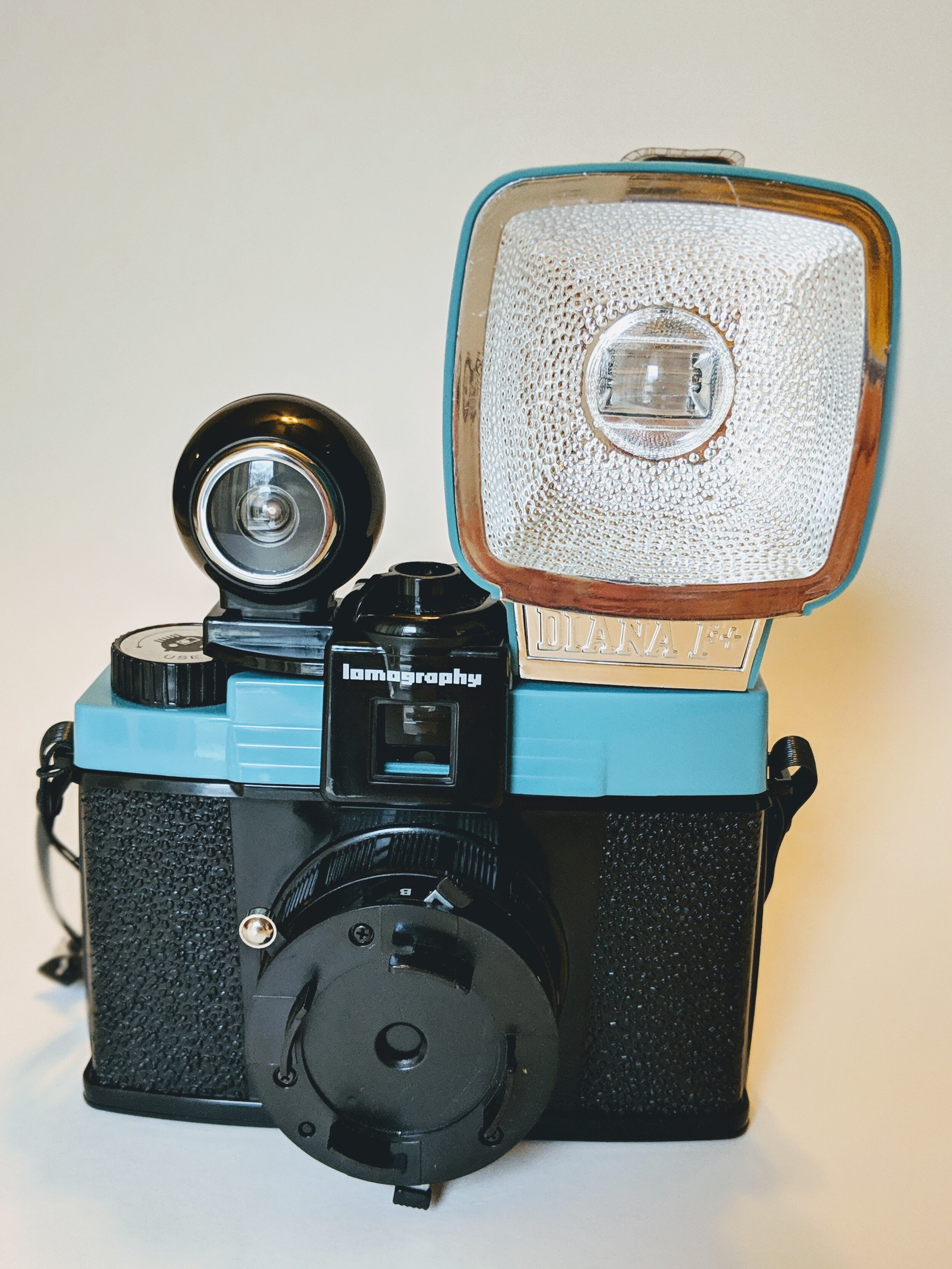
The Camera is opened from the bottom, it has a convenient lock to hold the back in place – much more secure than the Holga back – but loading the film in this camera inevitably leads to light leaks. The camera has some flimsy retainers on the bottom of it that hold the film spool in place, and after 3 rolls I still haven’t figured out how to make this camera not suck at holding and advancing film. The delicate dance of the film contortionist begins by opening the back and tucking it under one arm while carefully inserting the 120 roll. Even with 100% mental focus on the task at hand, the film roll unravels like a cartoon window shade, exposing the bottom edge of the film to light. Once the film is subdued, the paper leader is the next challenge to tackle. It is wax-coated, so it’s slippery and requires a couple tries, a few choice profanities, and a folded crease in the paper to get it to grab and wind on the take-up spool. Once this is done, the back can go back on, but the film is barely secured inside the camera so it binds while winding, and causes the camera to record the image on the bottom edge of the film. It’s mostly just annoying, though. To be perfectly honest, this makes it one of the most authentic feeling of the toy cameras I own.
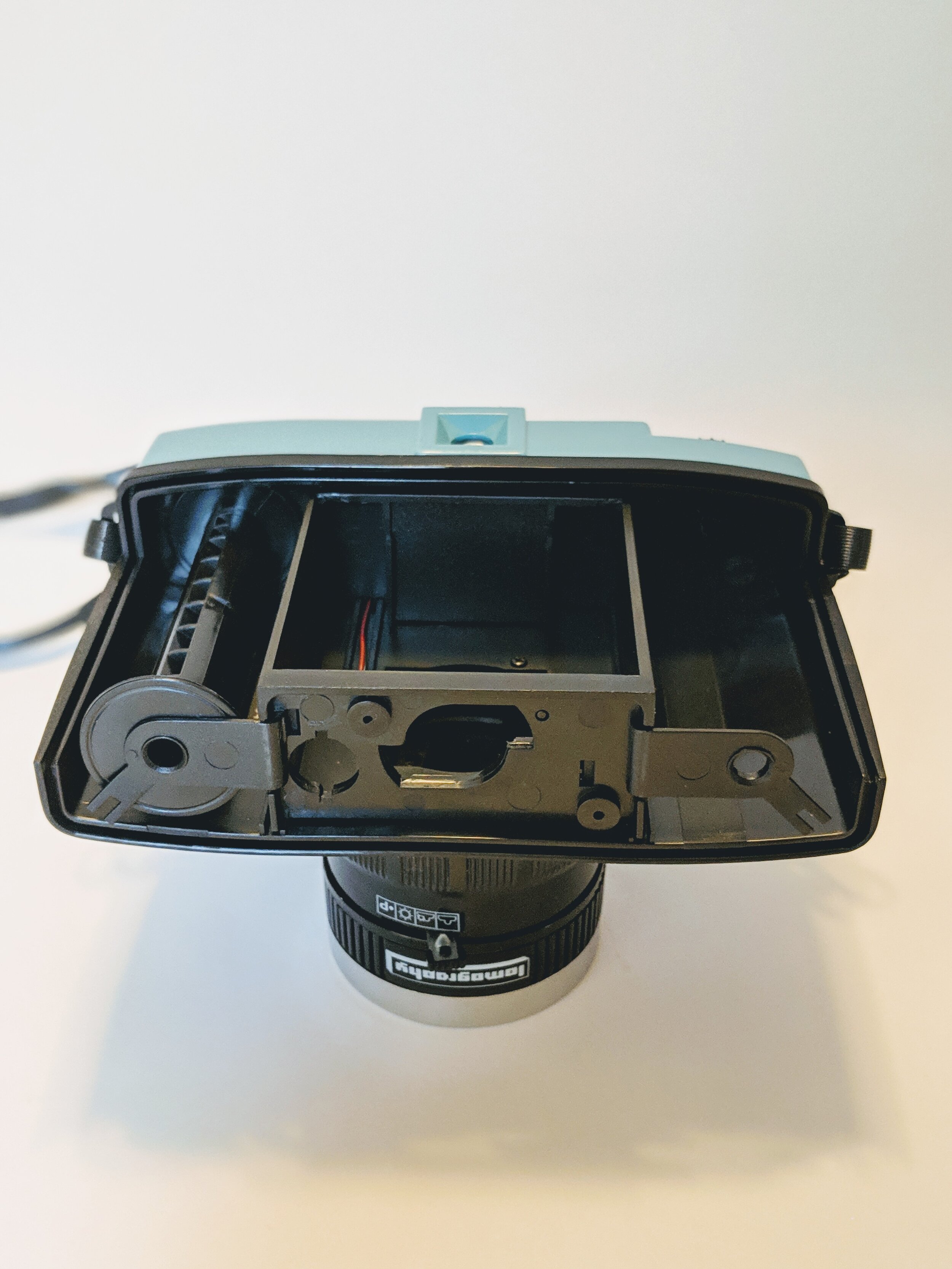
The Flash
The flash on the camera is another oddity. It’s not a typical hotshoe-mounted flash, but a two-pronged flash that requires an adapter if it’s going to be used on any camera except the Diana. It also has a really interesting feature – a set of multiple colored gel strips that slide into the flash over the bulb to give colorful flash effects. I dig it. It has this large white ball on the back of the flash that glows red when the flash is powered and ready to fire. It takes 3-5 seconds between shots for the flash to cycle, but it takes longer than that to wind for the next shot, so there’s really no inconvenience from the slow cycle.
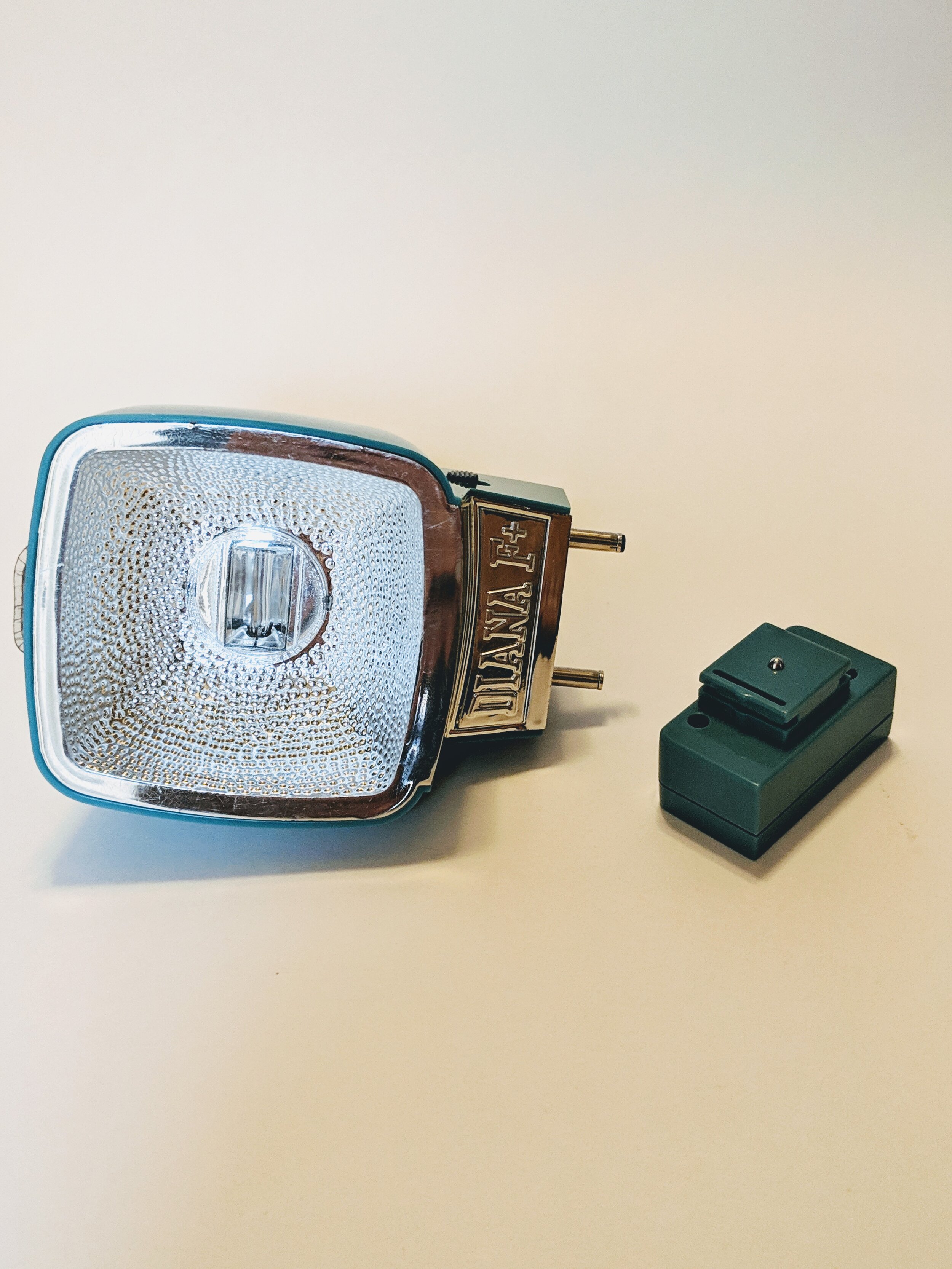
Fisheye Photographs
The Fisheye lens reminds me of the wide-angle phone camera attachment in its capabilities. The images look like they were shot out of a porthole, and the lens noticeably shrinks the size of the shot and doesn’t utilize the whole frame, but it does produce some nice results. In fact, it’s much easier to use than the stock lens because there’s less guesswork in the focus.
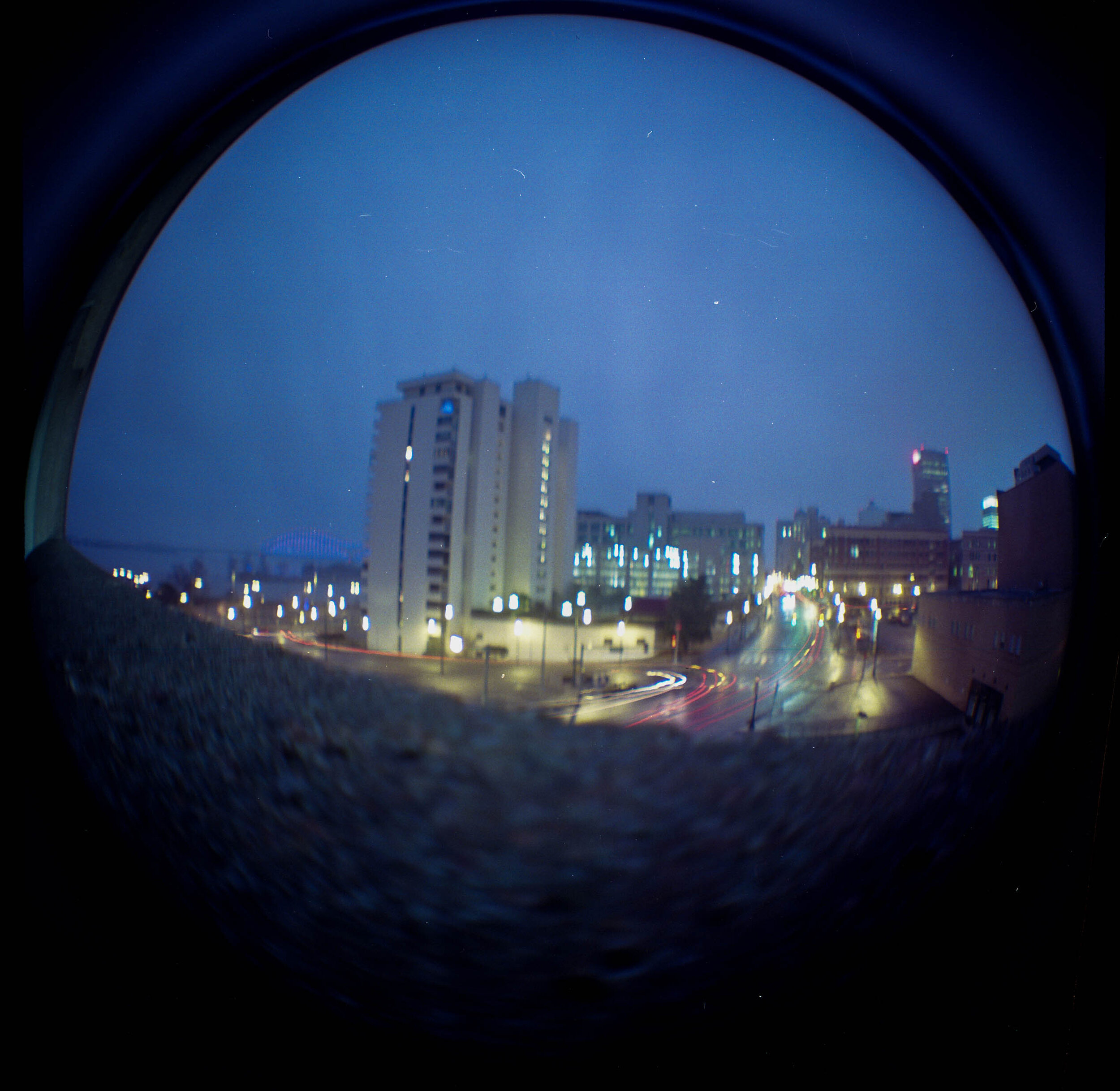
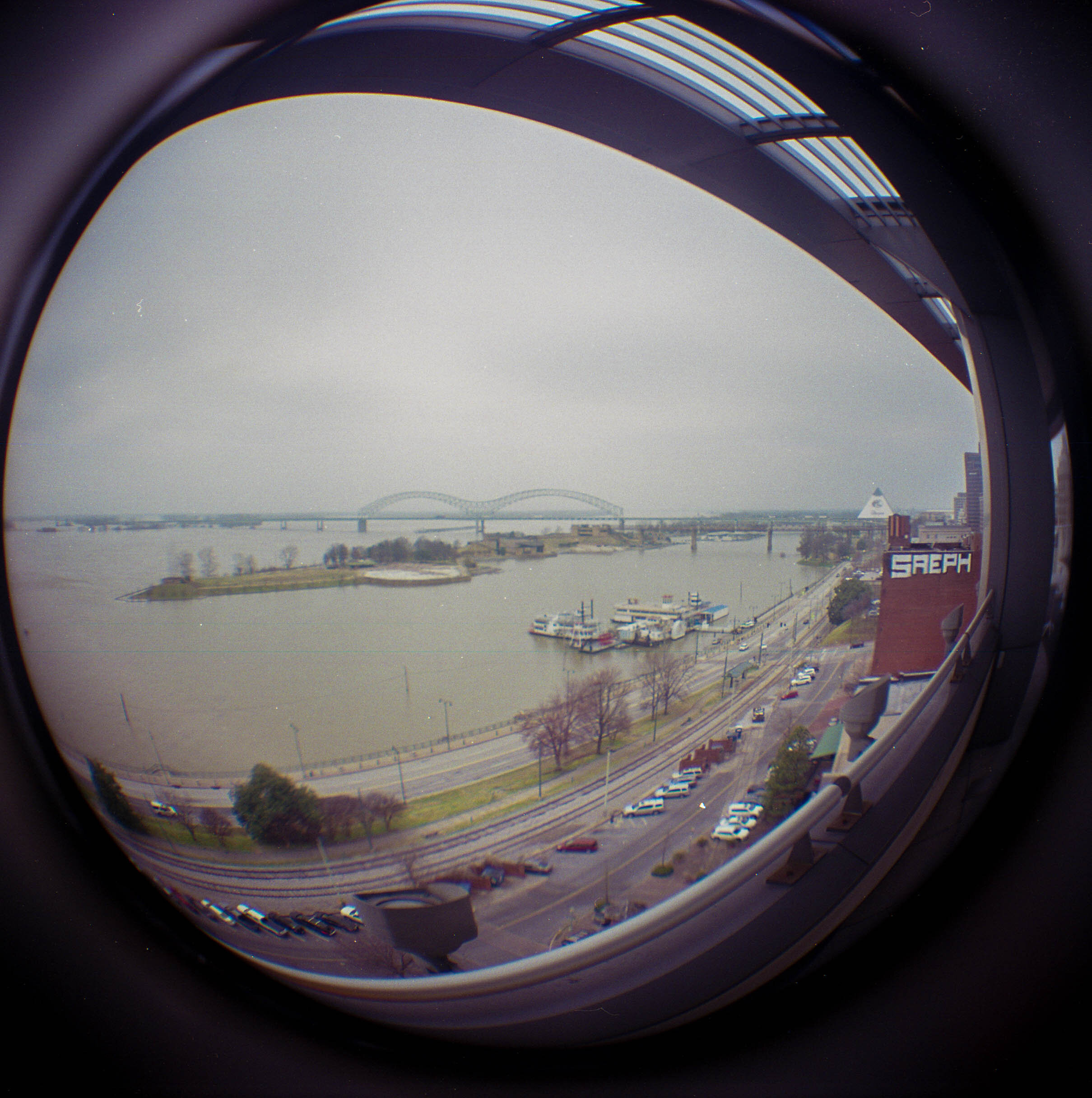
Pinhole Photography
The pinhole feature of the Diana F+ is decent, too. It’s a little soft but so are most pinhole shots. A pinhole camera is the most basic form of camera – often called a camera obscura it’s similar to those shoebox viewers we made as kids to view eclipses without glasses. It uses a pinhole instead of a lens, and takes a long exposure of light. Whatever light seeps in through the pinhole gets recorded onto the film. Here are a couple of example pinhole shots from the Diana.
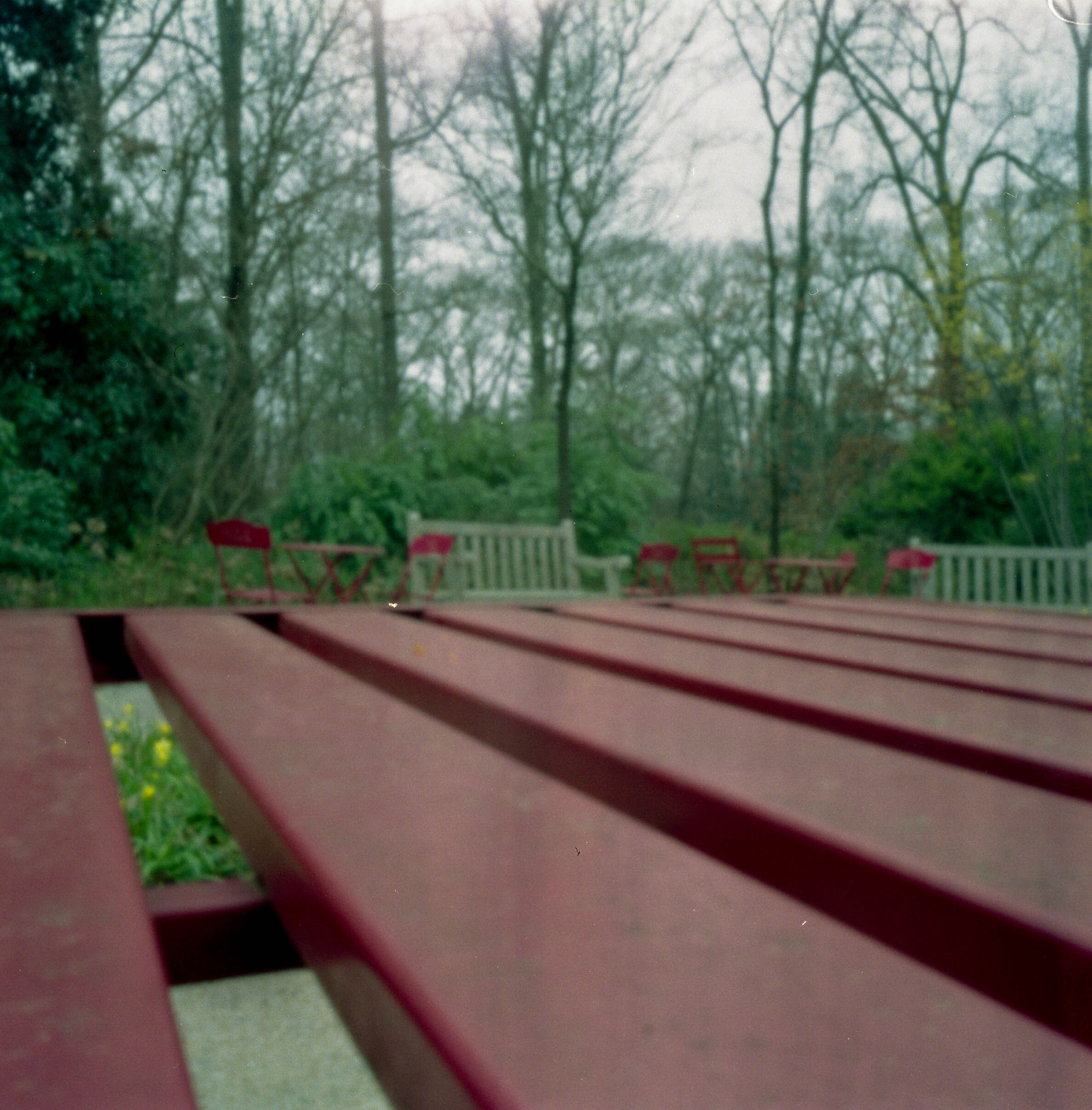
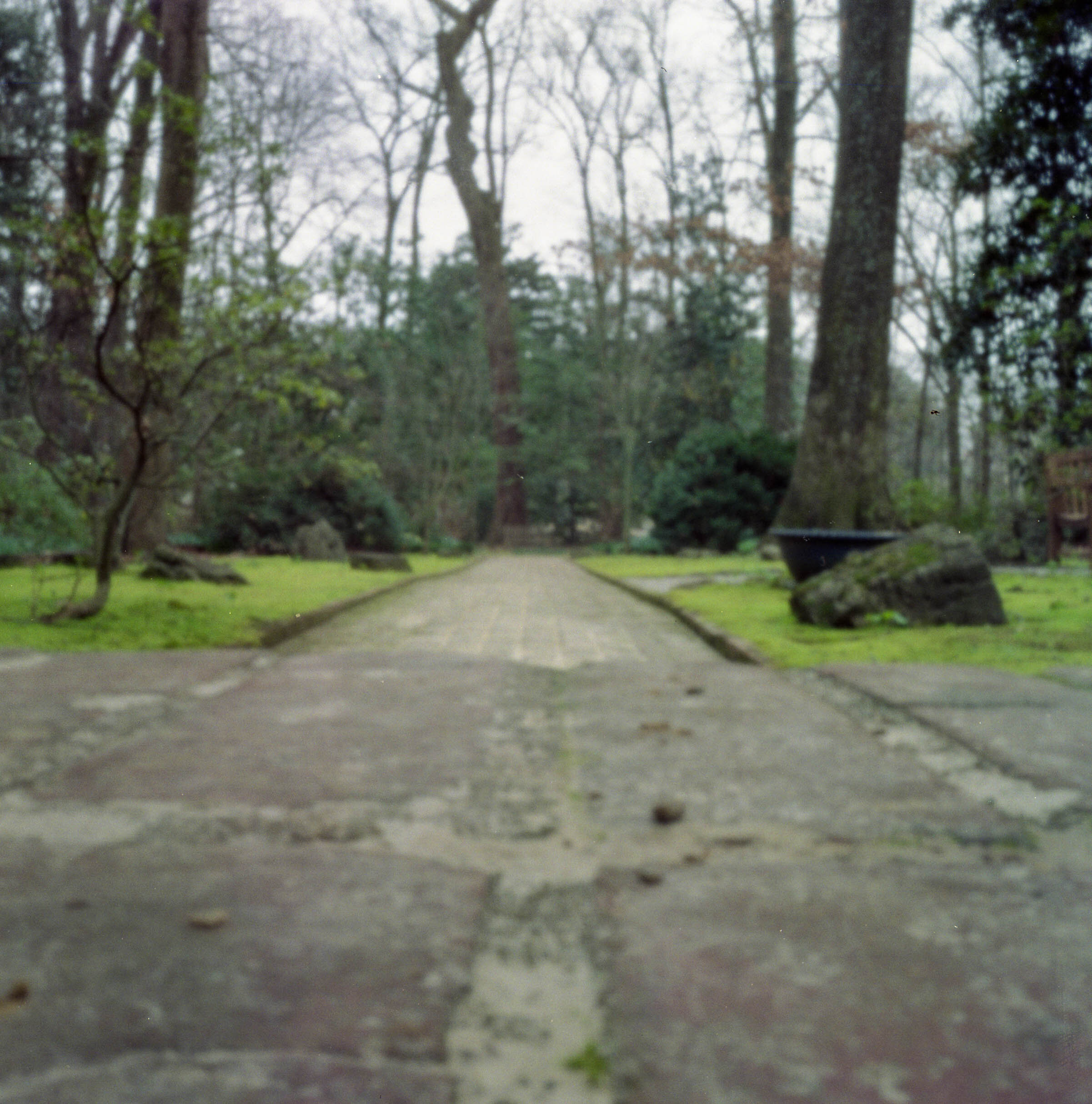
Double Exposures
Another nice feature is the ability to do double-exposures with this camera. Since the film advance is not coupled to the shutter release, you can take as many exposures on a single frame as you’d like. This is a fun technique if you’re only bringing a couple rolls on your outing and you want to maximize your shots. You still only get two rolls, but by carefully choosing your first/second shots of each frame, you can get really creative and come back with some great conversation pieces.
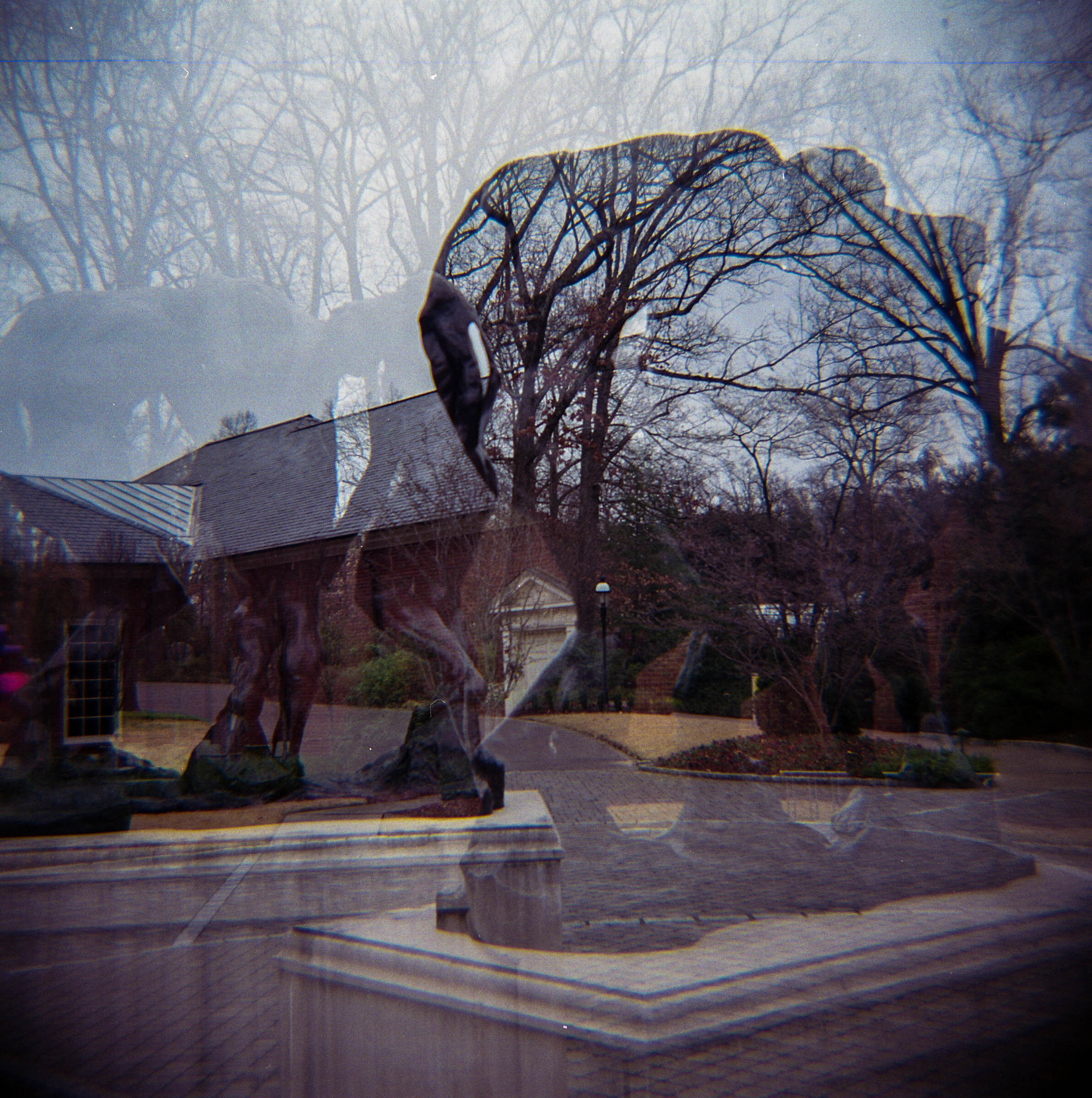
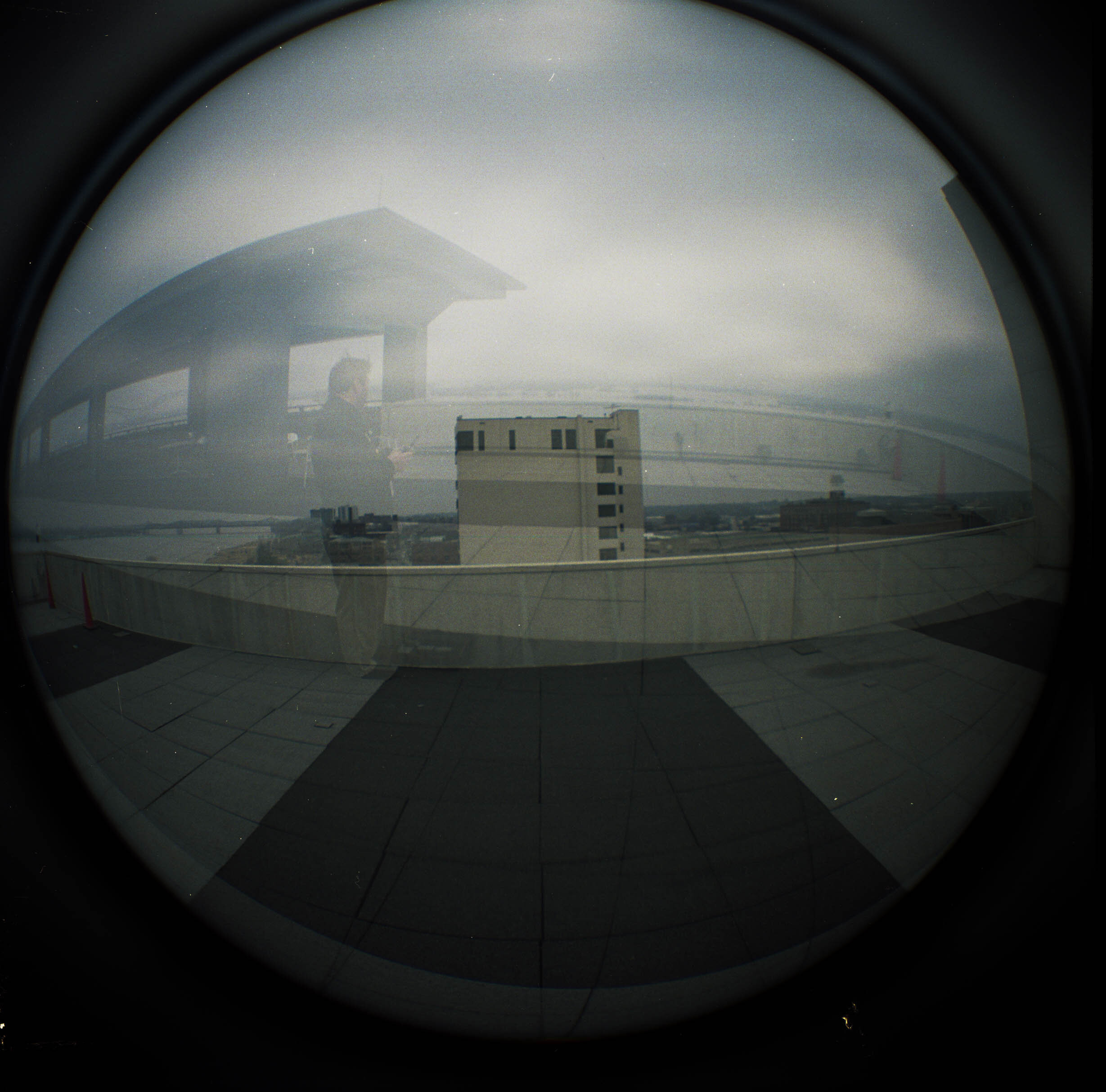
Stock Lens
The stock lens is a 75mm (50mm equiv) lens and it’s where the signature sharp-center, soft edges, vignetting comes into play. I found this lens a tad more tedious to use, mostly because focusing meant taking my eye out of the viewfinder, flipping the camera upward, and turning the inner focusing ring. It just wasn’t very user friendly while I was shooting. The solution I chose was to set it between 2-4m and 4m-Infinity and just shoot. It honestly probably could have been left on 2-4m and been fine for everything.
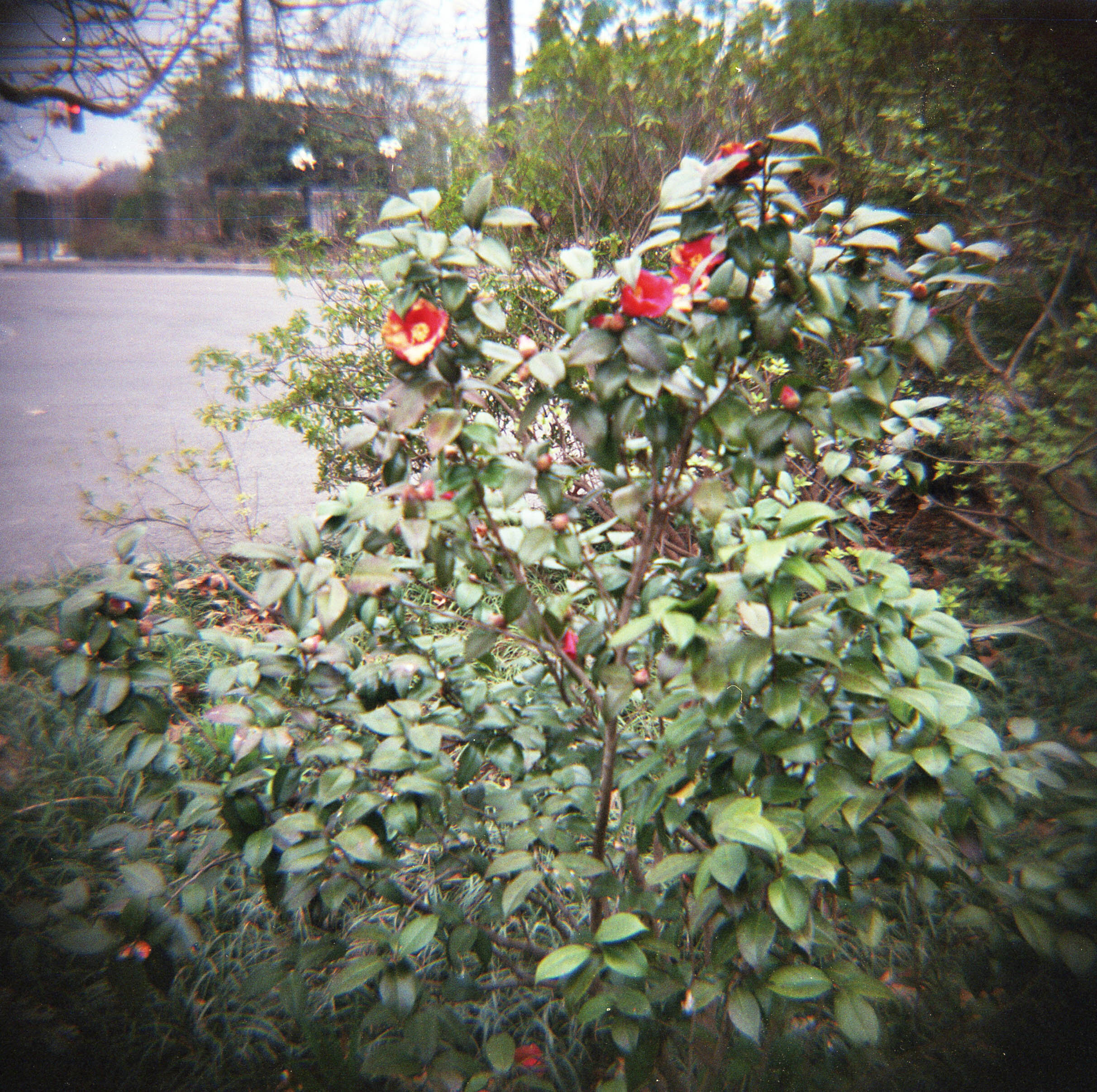
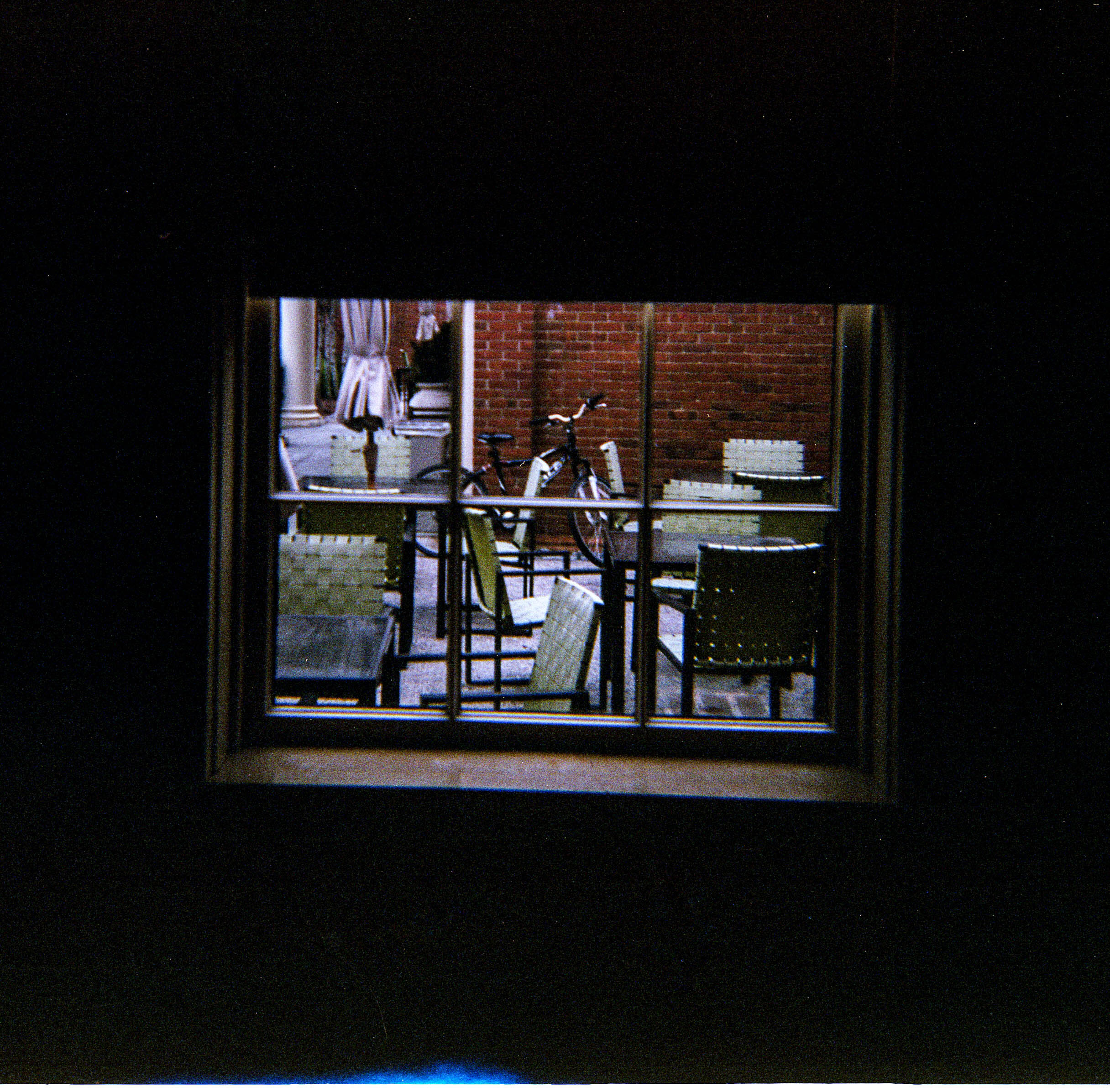
Impressions and Final Thoughts
I really like the Diana F+. It’s a swiss army knife of Chinese toy camera capabilities. I like the modular configuration, the pinhole feature, and the size. It’s also a conversation starter. One of the Dixon Gallery employees asked me about it and I was even able to show her how the lenses are interchangeable and how it has a pinhole feature.
It did, however, leave me with a bit of a lackluster feeling about it in comparison to my Holgas. It is more versatile than the Holga, but the focusing on it is irritating. The film advance binding and tricky loading were also a bit annoying. Overall, it is a great camera to have in my collection. Since I know its quirks and limitations now, I know what to expect when I take it out and use it. For now it’s comfortably tucked away with the rest of the toy cameras. It will definitely come back out in a couple weeks when the tulips start blooming at Dixon Gallery and Gardens.

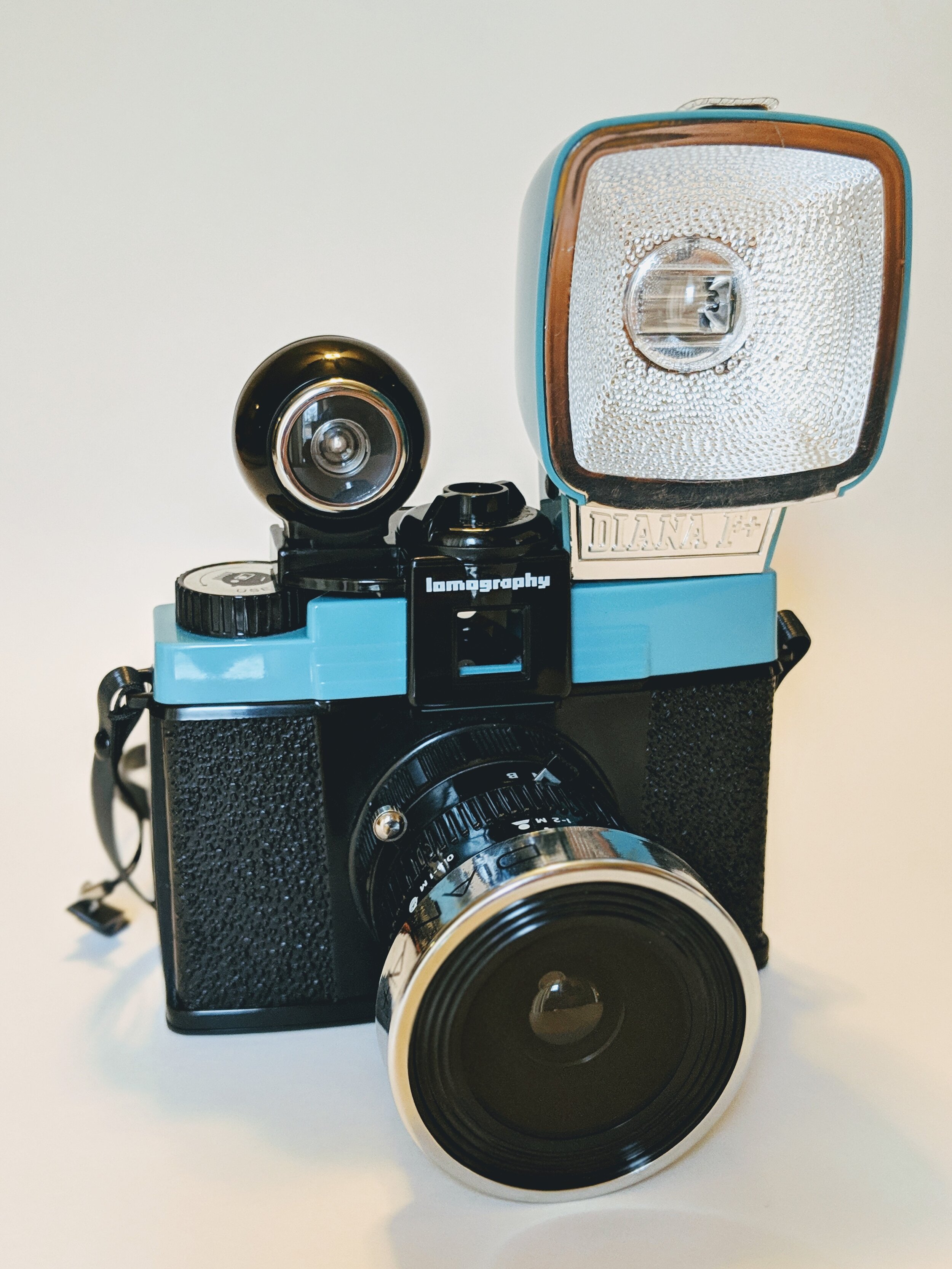
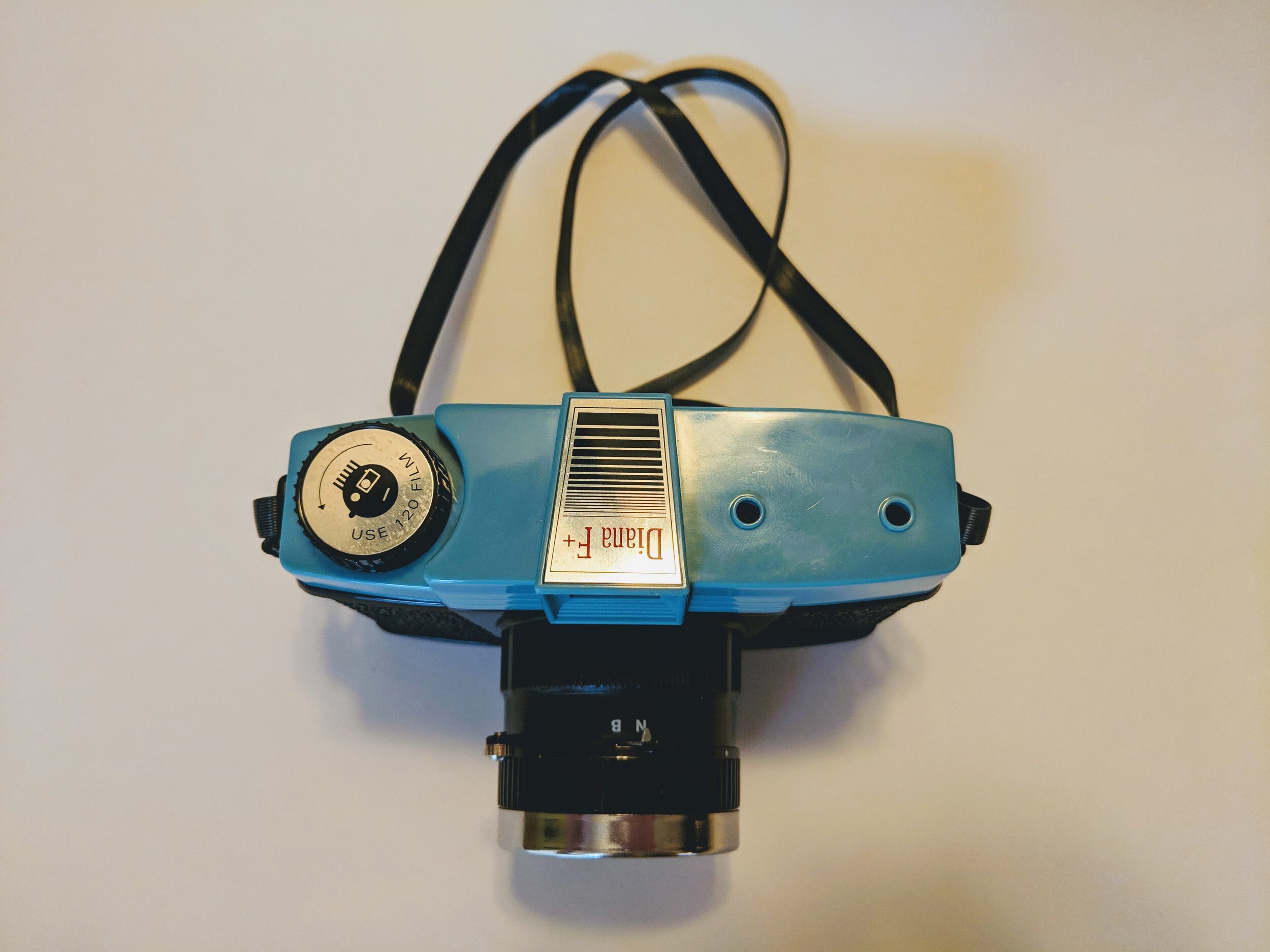
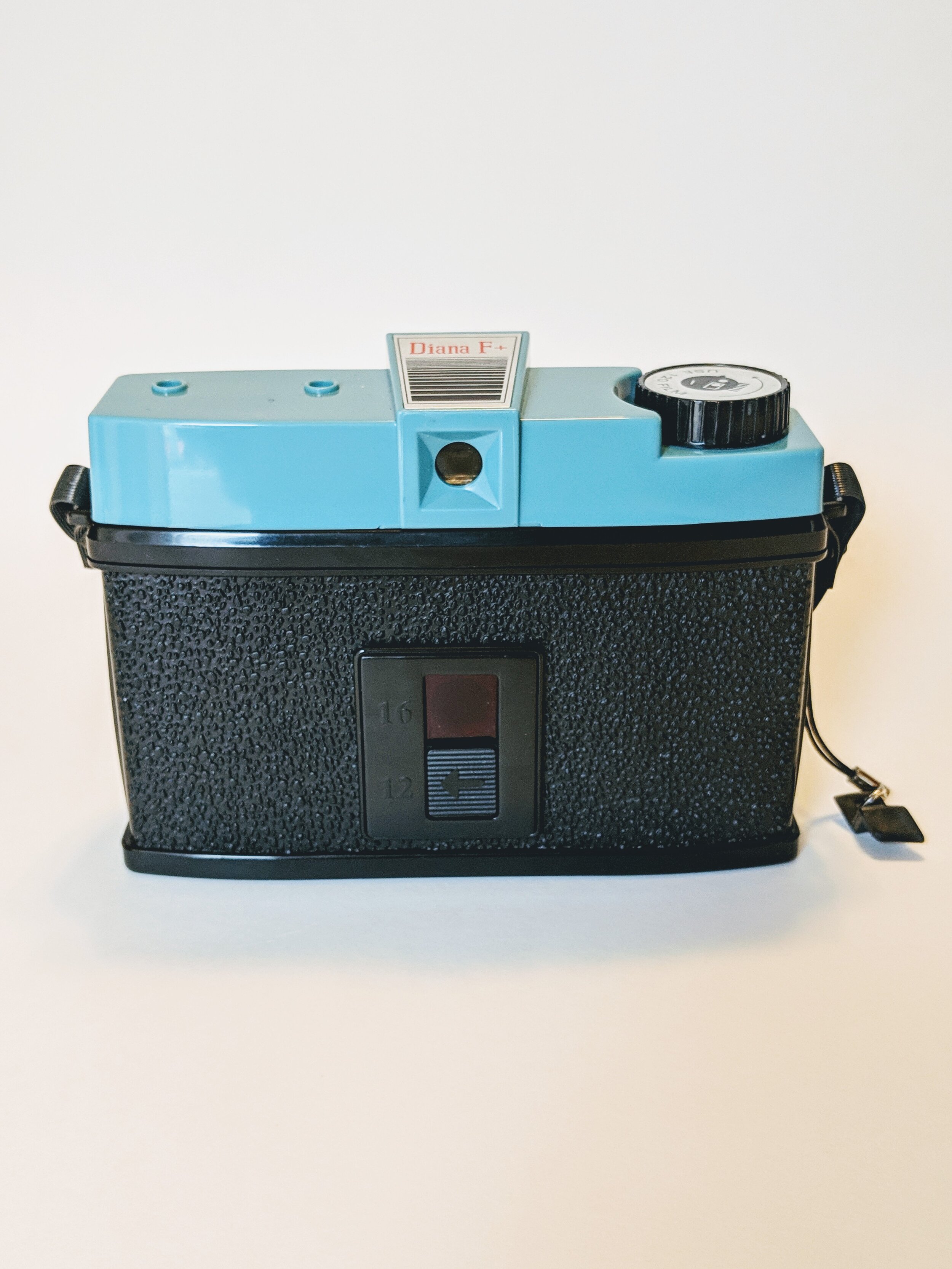
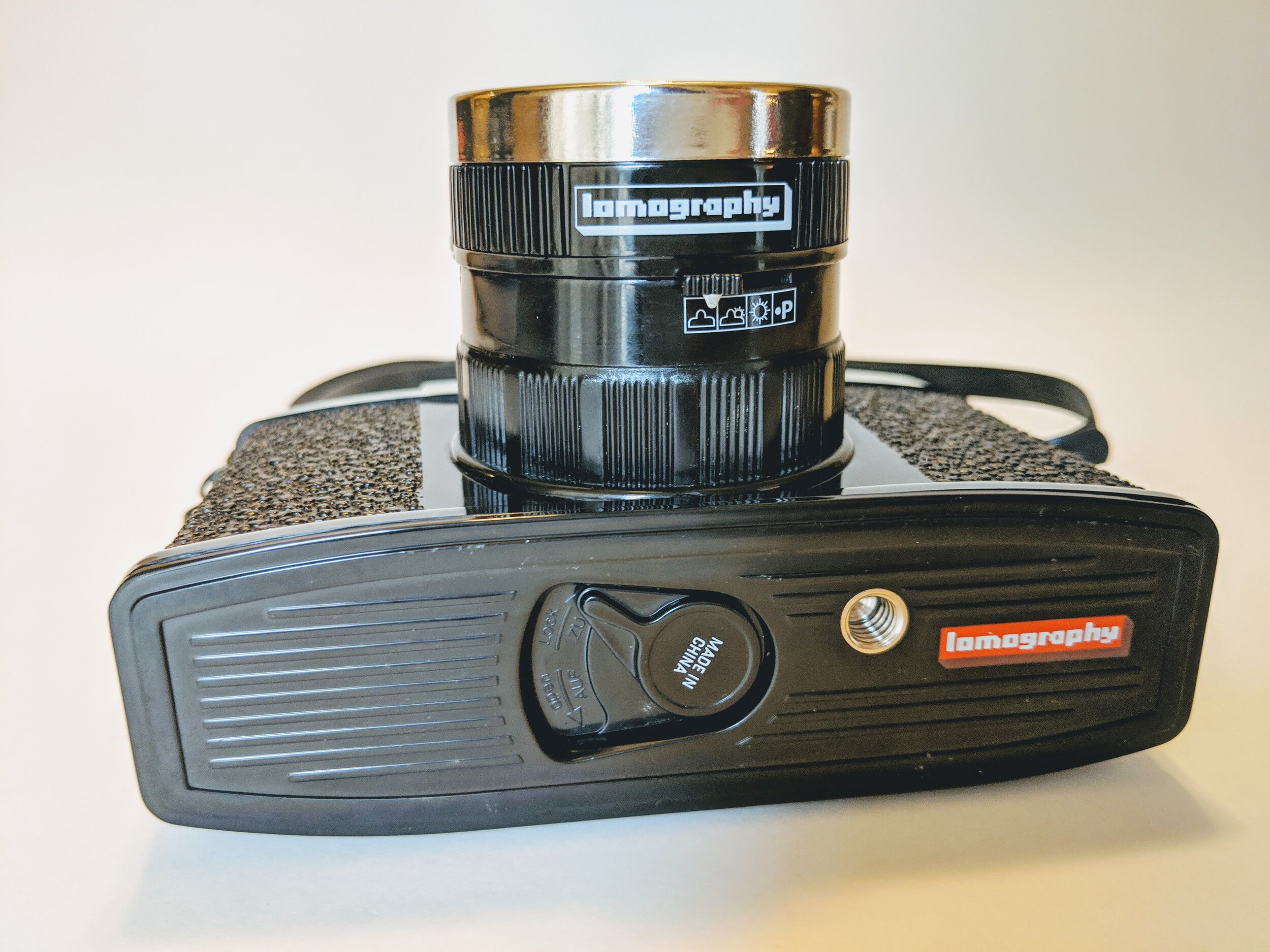
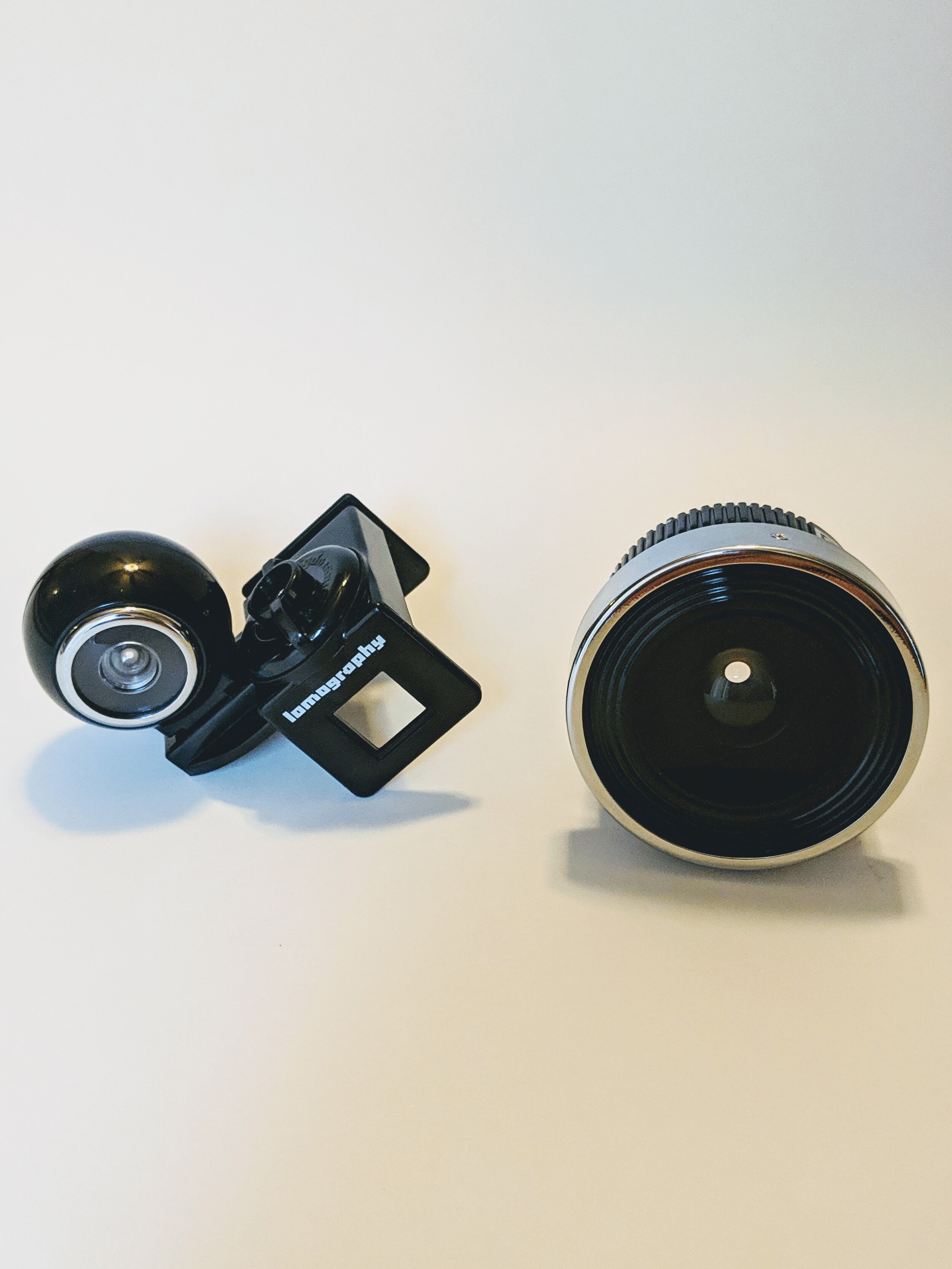
Leave a Reply
You must be logged in to post a comment.